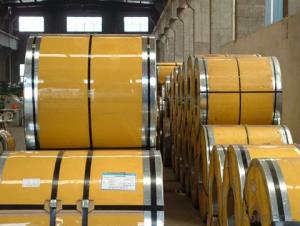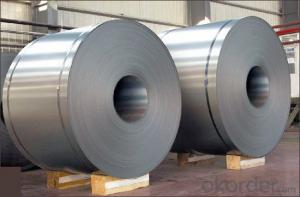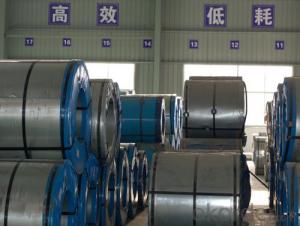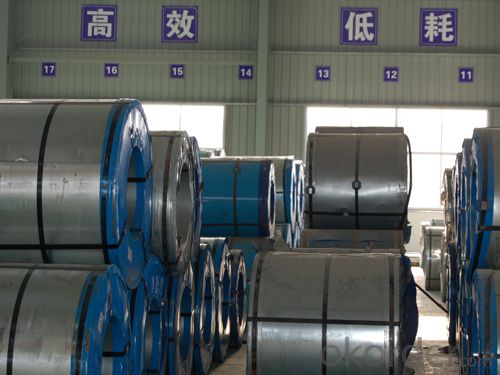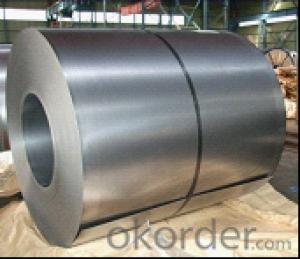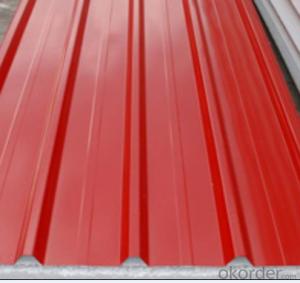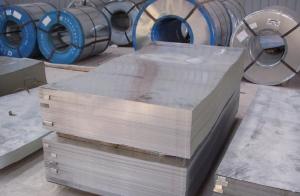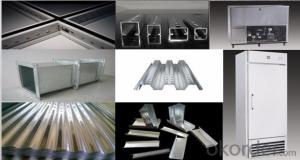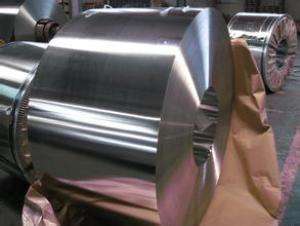Best Quality Hot Dip Galvanized Steel Coil Regular Spangle
- Loading Port:
- Tianjin
- Payment Terms:
- TT OR LC
- Min Order Qty:
- 25 m.t.
- Supply Capability:
- 50000 m.t./month
OKorder Service Pledge
OKorder Financial Service
You Might Also Like
Steel Specification:
Thickness: 0.2-3.0mm
Width: 600-1500mm
Coating Mass: Z08,Z12,Z18,Z20,Z22,Z25,Z27,Z35
Z80,Z120,Z180,Z200,Z220,Z250,Z275
Tolerance for thickness,width,flatness and so on conform to the requirements of JIS G3302 or ASTM A653M/924M
Coil ID can be either 508mm or 610mm, maximum coil OD is 2000mm
The speicfication of ASTM Such as A653m,A924 M and so on have been updated to the latest revisions
Application:
BUILDING & CONSTRUCTION
Floor decks, ceilings, verandas, rolling doors, warehouse, partitions, sheds, gutters, wall, underground piping, sashes, beams, fences, scaffolding, indoor decorations, ducts, ventilating pipes, steel frames and cable trays.
ELECTRICAL APPLIANCES
Freezers, video recorder cases, motor cases, lighting fittings, water heaters, washing machines, refrigerators, stoves, air conditioners, dehumidifiers, fluorescent light housings, electrical heaters, toasters, microwave oven enclosures and switch boxes.
TRANSPORTATION
Containers, under body panels, bus & truck body panels, fuel tanks, noise screens, highway signs, air cleaners, conveyor systems and guard rails.
AGRICULTURAL EQUIPMENT
Barns, drying machines, animal houses, hoppers, irrigation systems, greenhouses, water tanks, sheds, silos, agricultural implements and feeders.
FURNITURE & OTHERS
Vending machines, drums, cans, pails, sauna inner parts, chimney pipes, entertainment machines, solar collectors, office equipment, steel furniture, tool boxes, garages and waste bins.
COMPUTER'S APPLIANCES
Computer shells and communication instruments。
Surface Treatment:
Chromating treatment or anti-finger print
Surface Finished:
REGULAR SPANGLE:
Regular spangle is also called normal spangle which is naturally formed without any additional treatment during galvanizing.
MINI SPANGLE:
The spangle is restrained and formed as mini spangle by reducing the lead content in the zinc liquid or by blowing the zinc powder from the equipment installed on the zinc pot.
EXTRA SMOOTH:
The mini spangle is further skin-passed to produce the extra smooth surface.
- Q: Why can steel HPB300, steel plate without Q300, steel structure manuscript review, but also continued the Q235, why not improve it?
- Carbon steel according to the steel yield strength is divided into 5 grades: Q195, Q215, Q235, Q255 and Q275 of each grade because the quality is divided into A, B, C, D grade, with a maximum of four kinds, some only one; this is just plain carbon steel, the price is cheap, generally not heat treatment. Only quality carbon steel has the value of heat treatment.
- Q: Are steel sheets resistant to termites?
- Steel sheets are not immune to termites, contrary to materials like concrete or steel. Termites can effortlessly invade steel sheets and devour the wood framing or any organic substances that might be there. Thus, it is crucial to implement necessary precautions to safeguard steel sheets from termite infestation. These measures may include utilizing termite barriers, treating the adjacent soil, or routinely examining and upkeeping the region to deter termite intrusion and destruction.
- Q: What are the different embossing options available for steel sheets?
- There are several embossing options available for steel sheets, including blind embossing, deep embossing, pattern embossing, and textured embossing.
- Q: Are steel sheets resistant to warping or bending under load?
- Yes, steel sheets are generally resistant to warping or bending under load due to their high strength and stiffness.
- Q: Can the steel sheets be bent without cracking?
- Steel sheets have the capability to be bent without cracking. This capability relies on several factors including the type and grade of steel, the thickness of the sheet, and the bending process employed. As a general rule, steel sheets can be bent without cracking as long as the bending radius and angle fall within the recommended limits specific to the type and grade of steel being used. Furthermore, preheating the steel sheet before bending can further mitigate the risk of cracking. It is crucial to adhere to proper bending techniques and utilize suitable tools to guarantee successful bending of steel sheets without any cracks.
- Q: Are steel sheets suitable for agricultural equipment?
- Yes, steel sheets are suitable for agricultural equipment due to their durability, strength, and resistance to harsh environmental conditions typically encountered in agricultural settings. They provide excellent protection against impact, corrosion, and wear, making them ideal for manufacturing various agricultural machinery and implements such as plows, cultivators, and seeders. Additionally, steel sheets can be easily formed and welded to create custom components, ensuring versatility in design and functionality for agricultural equipment.
- Q: How thick are steel sheets typically?
- Steel sheets can vary in thickness depending on their intended use, but they typically range from 0.5 to 6 millimeters thick.
- Q: What is the difference between a perforated and non-perforated steel sheet?
- A perforated steel sheet is a type of sheet metal that has small holes or perforations evenly spaced throughout the surface. These holes serve various purposes such as allowing for better airflow, drainage, or filtration. On the other hand, a non-perforated steel sheet does not have any holes and has a solid surface throughout. The main difference between the two is the presence or absence of these perforations, which determines their specific functions and applications.
- Q: How do steel sheets handle expansion and contraction?
- Due to its unique properties, steel sheets are capable of managing expansion and contraction in a predictable and controlled manner. Steel is renowned for its remarkable strength and durability, enabling it to endure the forces exerted during expansion and contraction without compromising its structural integrity. When steel sheets are exposed to high temperatures, such as those experienced during welding or in extreme environmental conditions, expansion occurs. This expansion is a result of the accelerated movement of steel molecules due to heat, leading to an increase in size. However, steel possesses a relatively low coefficient of thermal expansion, causing it to expand less compared to materials like concrete or wood. This property makes steel an advantageous choice for applications where dimensional stability is crucial. To effectively manage expansion, steel sheets are often designed with expansion joints or gaps that allow for movement. These joints can be found in structures such as bridges, buildings, or pipelines. They are strategically placed to accommodate the anticipated expansion and contraction of steel sheets without causing damage or deformation. Furthermore, the ability of steel to contract is equally significant. When exposed to lower temperatures, steel sheets shrink or contract. Although this contraction is typically less noticeable than expansion, it still needs to be taken into consideration in engineering designs. Fortunately, the contraction of steel is generally within acceptable limits and does not compromise the material's structural integrity. Overall, steel sheets are engineered to effectively handle expansion and contraction. The combination of a low coefficient of thermal expansion and the presence of expansion joints allows steel to accommodate temperature fluctuations without inducing significant stress or deformation. This makes steel a reliable and versatile material for numerous industries, including construction, manufacturing, and infrastructure.
- Q: Can steel sheets be welded?
- Yes, steel sheets can be welded. Welding involves using heat to melt the edges of the steel sheets and then joining them together to form a strong and permanent bond.
Send your message to us
Best Quality Hot Dip Galvanized Steel Coil Regular Spangle
- Loading Port:
- Tianjin
- Payment Terms:
- TT OR LC
- Min Order Qty:
- 25 m.t.
- Supply Capability:
- 50000 m.t./month
OKorder Service Pledge
OKorder Financial Service
Similar products
Hot products
Hot Searches
Related keywords
